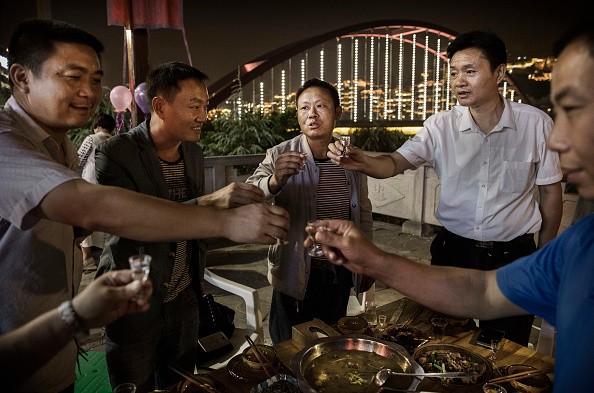While baijiu is a traditional drink enjoyed by the Chinese for any occasion, it has finally found its way outside the Great Wall. The Chinese alcohol has recently been gaining popularity with Western drinkers.
The grain-based drink is fermented in large earthen pits or jars that is made from clay or stone. Baijiu has an alcohol content between 40 to 60 percent and is distinguished by its bold and pungent aroma and flavor. It is usually taken with plenty of food and served in neat small glasses, offered as a toast and swallowed quickly.
Despite its seemingly unappealing aroma and flavor profile, baijiu is an expensive alcoholic drink, with prices recently skyrocketing during the Chinese New Year.
Because of its unusual taste, baijiu might not be that attractive to Western drinkers. But for those who have lived in China for some time like author Derek Sandhaus, the love for baijiu was developed through acquired taste.
In his book entitled "Baijiu: The Essential Guide to Chinese Spirits," Sandhaus describes the drink's complex flavors and aromas which are classified into three which are strong, light and sauce.
"A strong aroma tends to be bold in its flavors, with prominent notes of overripe tropical fruit and licorice, with a touch of spicy pepper. A light aroma is usually more subdued, with crisp floral flavors and a mellow sweetness typified by preserved fruit.
"A sauce aroma--name for soy sauce--is the most complex and umami of the bunch, with tastes that evoke mushroom, fermented bean, Chinese medicinal herbs and caramel."
To entice more people to get acquainted with the Chinese drink, mixologist and bar owner Paul Mathew believes that the drink's particular flavor profile requires imagination when designing a baijiu-based cocktail.
"I use the sauce aroma baijiu in small quantities. Umami notes are unusual in the cocktail world so you have to think differently about how to leverage them. This baijiu could work with tomato juice in a Bloody Mary or a Red Snapper," shares Mathew.
Meanwhile, he teams light aroma baijiu with citrus flavors to complement the fruity and floral notes of the spirit. And with a strong aroma baijiu, he tones it down with a twist of citrus zest over the drink or a dash of bitters, to make it more approachable.
London's Baijiu Cocktail Week has helped boost the popularity of the Chinese alcohol in the Western world. Five years ago, only a handful of bars in the U.S. and Europe would have stocked baijiu. But now, it can be found in hundreds of bars.
This year's Baijiu Cocktail Week is sponsored by Moutai and runs until Feb. 12.



























